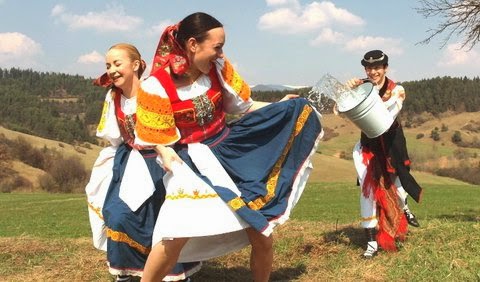 |
| Source: 76 Crimes |
The Russian law outlaws pro-gay "propaganda" that could be accessible to minors. Critics say it is so restrictive and vague that it deters almost any public expression of support for gay rights.What was missing from the reports was the historical preceedence for this decision. The attitudes and legislation in Russia against Gay and Lesbians is unfortunately not new.
I found an article from the Calgary Herald dated June 1993, "Russia: Anti-gay law wiped from books". In 1993 Russian legislators had formally lifted the Soviet era law declaring male homosexuality a crime. The law, Article 121, was a holdover from the criminal code and made Russia one of the few countries in Europe that considered male homosexuality a crime punishable up to five years in prison. Ten men had been sentenced in 1992 for the crime, and 1989 some 500 men were sent to jail for being homosexual.
One of the fall-outs from criminalizing gay people is the increase in AIDS and lack of treatment in Russia. Many gay men "were very scared they would be thrown in jail if they went to the doctor for a STD", said Dima Lychev, eidotr of the gay newspaper One In Ten. Such restrictions had cast doubt on official stats on AIDS in Russia at the time, saying 650-700. Activists have said the actual number is at least 10 times higher.
Around 1.4 million people in Russia, Eastern Europe and Central Asia were living with HIV at the end of 2011, representing an HIV prevalence of 1 percent. Around 140,000 became infected in 2011 and 92,000 died from AIDS related illnesses; there was a 21 percent increase in AIDS-related deaths between 2005 and 2011.

Around 1.4 million people in Russia, Eastern Europe and Central Asia were living with HIV at the end of 2011, representing an HIV prevalence of 1 percent.1 Around 140,000 became infected in 2011 and 92,000 died from AIDS-related illnesses; there was a 21 percent increase in AIDS-related deaths between 2005 and 2011.2
- See more at: http://www.avert.org/hiv-aids-russia-eastern-europe-central-asia.htm#sthash.2jxArsmV.dpuf
- See more at: http://www.avert.org/hiv-aids-russia-eastern-europe-central-asia.htm#sthash.2jxArsmV.dpuf
Around 1.4 million people in Russia, Eastern Europe and Central Asia were living with HIV at the end of 2011, representing an HIV prevalence of 1 percent.1 Around 140,000 became infected in 2011 and 92,000 died from AIDS-related illnesses; there was a 21 percent increase in AIDS-related deaths between 2005 and 2011.2
- See more at: http://www.avert.org/hiv-aids-russia-eastern-europe-central-asia.htm#sthash.2jxArsmV.dpuf
- See more at: http://www.avert.org/hiv-aids-russia-eastern-europe-central-asia.htm#sthash.2jxArsmV.dpuf
Around 1.4 million people in Russia, Eastern Europe and Central Asia were living with HIV at the end of 2011, representing an HIV prevalence of 1 percent.1 Around 140,000 became infected in 2011 and 92,000 died from AIDS-related illnesses; there was a 21 percent increase in AIDS-related deaths between 2005 and 2011.2
- See more at: http://www.avert.org/hiv-aids-russia-eastern-europe-central-asia.htm#sthash.2jxArsmV.dpuf
- See more at: http://www.avert.org/hiv-aids-russia-eastern-europe-central-asia.htm#sthash.2jxArsmV.dpuf




















